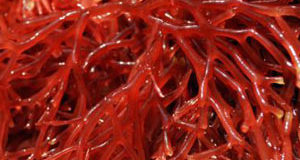
Prader-Willi is a rare syndrome, affecting both males and females equally. It is caused by a deletion or mutation on chromosome 15, inherited from the father during the conception stage. The disorder is marked by two phases and several abnormalities beginning at birth that cause complications and can lead to a diagnosis of failure to thrive due to decreased muscle tone, causing the infant to sustain difficulty in sucking. The second phase is noted between the ages of 2-5 when an insatiable hunger begins to emerge.
With the increased appetite, come weight control issues, behavioral challenges and unique medical issues. A child with PW is the most common known genetic cause of life-threatening obesity. One of the complications that occur with these individuals is that the metabolism uses drastically fewer calories than normal, leading to excessive eating and obesity. According to the Prader-Willi Association, when there is a flawed hypothalamus – the part of the brain that regulates when we are hungry and full – it results in an excessive need to eat, obsessive-compulsive disorders, anxiety and obesity.
Families who have young children at home must make changes to their environment to accommodate their limited diets, decrease in calories, and obsessive and often hoarding behaviors to obtain and hide food. Due to the limitations in food and diet, families and caregivers must supervise at all times. Families must change their home environment to accommodate these intense cravings by locking the kitchen, cabinet doors or the refrigerator. Most people with Prader-Willi require an extremely low-calorie diet, with limitations on the types of foods they can eat and when. An adult with Prader-Willi finds that their weight is best controlled in a group home especially designed for their diets and limited access to food.
The Association states that, as these children age into their teens and adult years, medical issues and complications can arise with obesity, such as heart disease, high blood pressure, diabetes II, depression, skin problems, and sleep apnea, to name a few. Although less common, some children develop scoliosis, a curvature of the spine.
What techniques for weight control are helpful? A balanced, low-calorie diet in conjunction with regular weigh-ins and daily exercise are highly recommended. Doctors may recommend growth hormone therapy for some individuals. In that case, a nutritionist will also need to be consulted due to the proper balancing of certain foods needed to work with the growth hormone, not against it. In addition, people with Prader-Willi may benefit from a combination of educational supports, such as developmental or rehabilitation therapy for learning, mental or cognitive disabilities, physical therapy to help strengthen their poor muscle tone and occupational therapy to teach them methods and strategies for learning how to take care of themselves with proper hygiene, self-help and daily tasks.
There are several options for weight management through diet, two of them are the stoplight and food pyramid, respectively. In the Stoplight diet, food is categorized into three categories. The premise is that a person who is about to consume a red light food, should take caution, as it is a high caloric food. Foods categorized in the yellow category are needed for nutrition, while the green category foods are low calorie and have no eating restrictions. A dietician needs to be consulted before altering a food plan to increase, decrease or maintain weight.
According to the Prader-Willi association, the food pyramid has been changed to accommodate those with Prader-Willi and the decreased need for calories. The following are not food or diet recommendations. Persons wishing to make changes to their current diets are highly recommended to consult a physician before doing so. The vegetable group suggests 6-8 servings of leafy greens, peppers, cucumbers, carrots, mushrooms and broccoli, as examples. The Bread, cereal, rice and pasta group suggests 3-5 servings, the fruit group – 4 servings, the milk, yogurt and cheese group – 2 servings, meat, poultry, fish, dry beans and eggs group – 2 oz each, while fats and sweets are used sparingly.
Persons with Prader-Willi would benefit from a diet and exercise plan used in conjunction. For additional information on these diets, please contact your local dietician or The Children’s Institute. For more information and articles on Prader-Willi, please visit the Prader-Willi Syndrome Association of the USA.

Source by Julie Callicutt
 Vitamin Agent The Health & Naturalistic Source
Vitamin Agent The Health & Naturalistic Source





